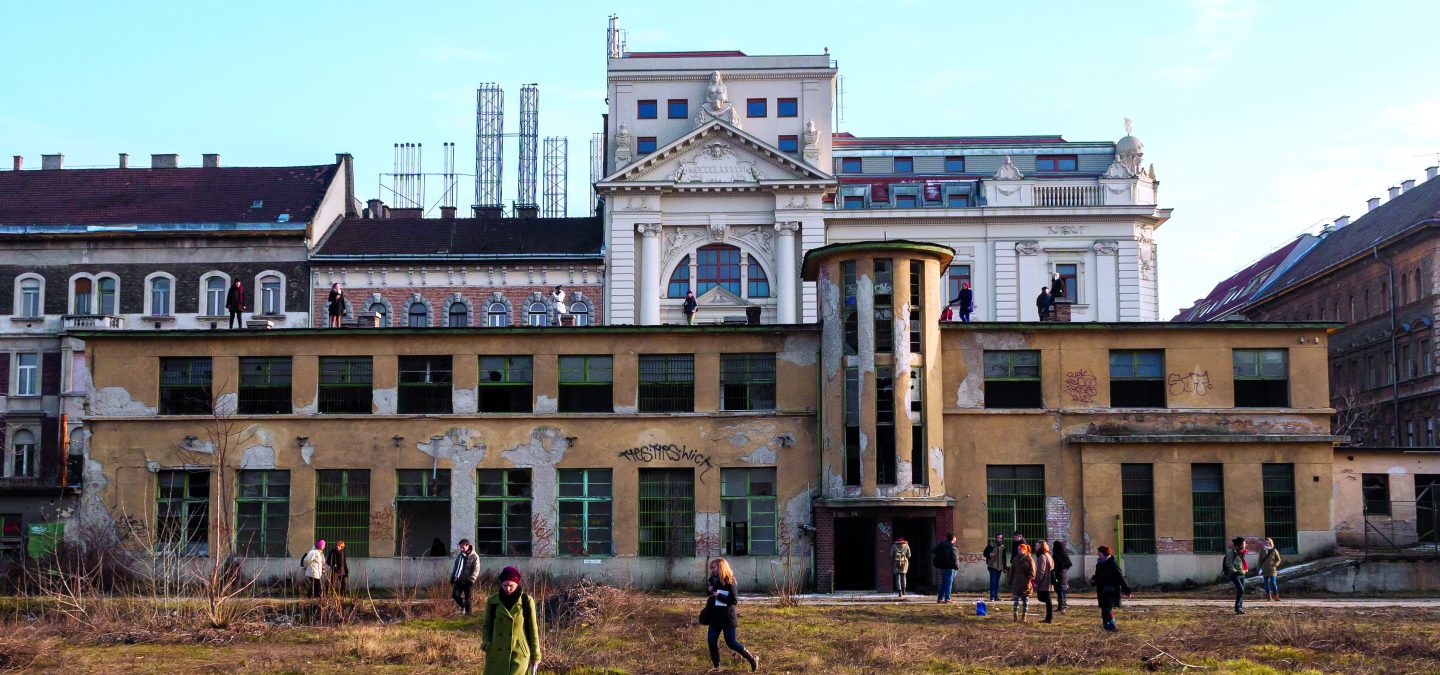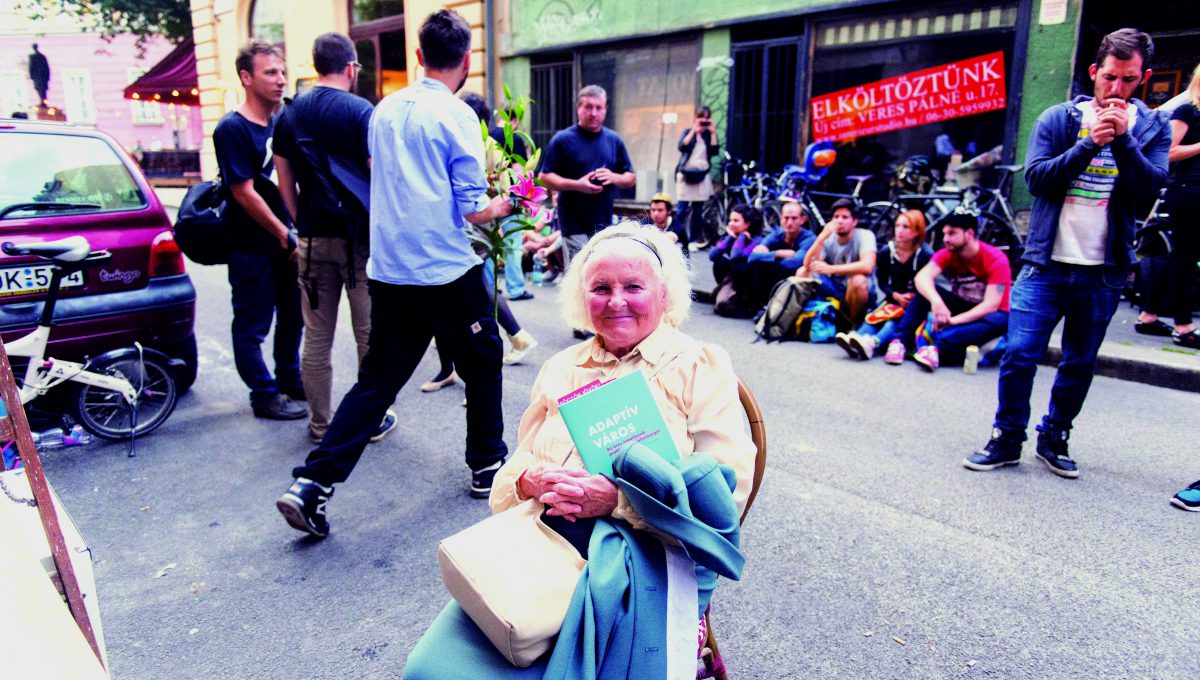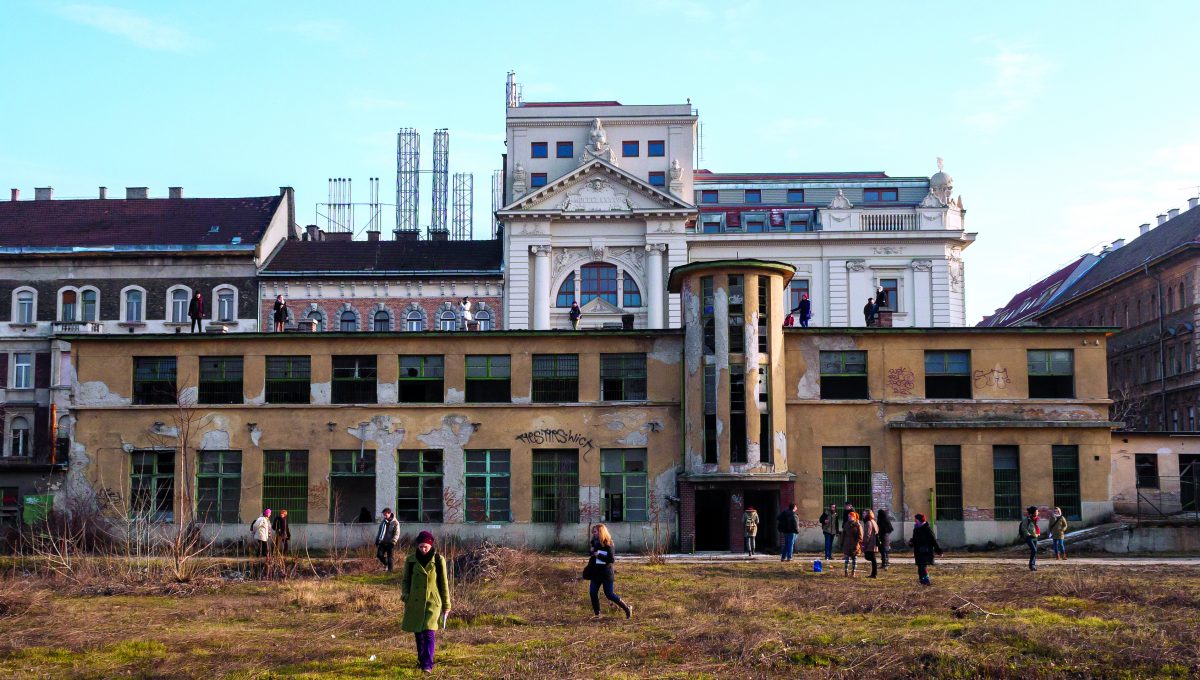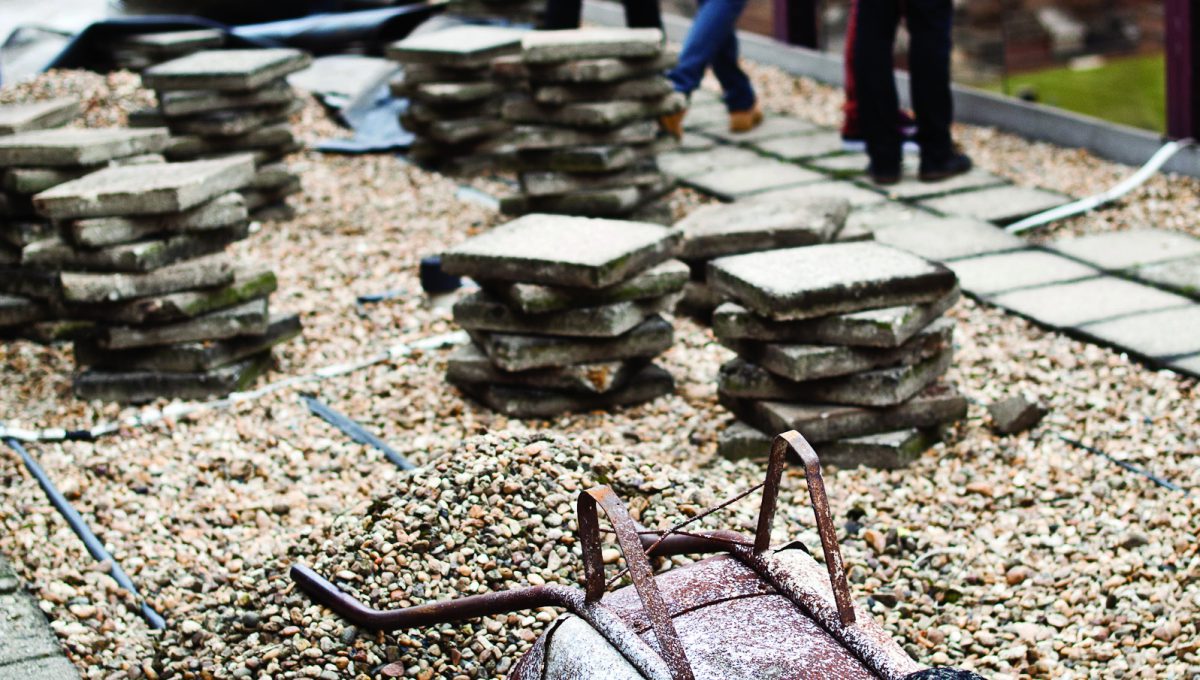
Keep up with our latest news and projects!

KÉK is the Hungarian Contemporary Architecture Centre (an NGO focusing on urbanism, architecture and design). KÉK began in 2005, when a group of architects, urbanists, journalists and artists, decided to launch a space for discussing architecture and the city. The group fortuitously gained access to a former warehouse in the backyard of a museum. The warehouse, in the vicinity of Budapest’s relatively central but reasonably infamous Keleti railway station, was in bad shape. Unused for decades and tagged with Soviet graffiti, it needed significant improvements to accommodate events and the public.
The building itself was a catalyst for KÉK: it gave form to the organization and determined many of its activities. The size of the warehouse allowed for professional events, debates and conferences, and also encouraged after-hours parties. The building also brought a new cultural space in a working-class neighbourhood known for its extreme density and low living standards. By opening a backyard to the local street network and turning it into a lively and accessible space, KÉK increased visibility for the area to a citywide audience and began changing its sense of insecurity. Moreover, the experience of opening this long-time vacant warehouse to the public inspired KÉK to play a role in urban regeneration.
From the mid-2000s, we’ve witnessed entire streets losing their commerce and foot traffic, and adjacent public spaces turning into desolate spots. Aware of the emerging problem of vacant properties as a combined result of bad management and the economic crisis, KÉK began a structured research into the phenomenon of vacancy.
The Lakatlan program, run by KÉK, investigates ways to reuse long-time vacant properties in Budapest. Referring to the Hungarian word for “Uninhabited”, the program combines research, advocacy and mediation activities. Bottom-up and small-scale initiatives like community gardens, participatory parks, pop-up shops, and social spaces in the city’s existing fabric are a few of the program’s priorities for boosting the urban regeneration movement.
In 2012, we launched a program to understand the causes, patterns and potentials of empty shops, offices, schools, hotels, department stores, cinemas and theatres all across the city. A main activity was mapping vacant spaces in the city, and elaborating models for small-scale urban regeneration, based on the reuse of empty shops and buildings of a neighbourhood. In May 2013, KÉK and the Vienna-based Wonderland Platform for European Architecture, invited architects from Helsinki, Sheffield, and Rotterdam to work together with residents on a neighbourhood plan for the temporary use of vacant properties. The workshop generated questions that opened the way for later phases of the Lakatlan program: How can vacant spaces become elements of a neighbourhood-scale ecosystem where certain activities and functions support each other? How can communities help sustain local businesses by giving them visibility among local networks? How can local businesses contribute to community activities and vice versa? Can a lively network of spaces bring life back to abandoned streets?
 The Festival of Open Shops - © Daniel Dorkó
The Festival of Open Shops - © Daniel Dorkó
 Cooperative planning workshop at Nyugati Ground - © István Keresztes
Cooperative planning workshop at Nyugati Ground - © István Keresztes
 Investigation workshop at the Skála Metró department store © Daniel Kovats
Investigation workshop at the Skála Metró department store © Daniel Kovats
Inspired by the workshop and various study trips, the concept of connecting the urban regeneration process with the spatial needs of bottom-up initiatives has been the underlying principle of the program’s operational phase. In September 2013, we began working with civic organizations, social enterprises and cultural initiatives, mapping their spatial needs, organizational means and co-operational capacities, and connecting them with owners of long-time unrented spaces. Through our work with municipal officers, real estate professionals and civic organizations, it was clear that new frameworks, policies, and interventions for dealing with vacant spaces were needed.
This work led to the Festival of Empty Shops in October 2014, organized with the Budapest Municipality, but featuring mostly privately owned shops – a clear demonstration of inflexible municipal property management. The Festival opened long-time vacant shops for a dozen initiatives ready to install themselves in a ground-floor space for a month, testing the advantages and disadvantages of physical presence and constant availability. The jury established clear criteria: the selected initiatives had to be open in regular hours, interact with their environment, and hold events. While the Festival was featured in various media reports and entered mainstream urban culture through TV quiz shows, it also brought life back in centrally located but disaffected streets, by bringing hundreds of people to the temporary shops’ events. By putting these streets back on the map, and by giving an idea of how these streets could function if better managed, the festival succeeded in demonstrating the urban transformational capacity of revived ground-floor spaces. At the end of the month, about a quarter of the initiatives negotiated long-term contracts with their landlords, building on mutual confidence and a growing understanding of each other’s positions.
Addressing the possibilities of larger buildings, as well as smaller, distributed spaces, the cautious drafting of rental contracts and the careful organization of renovation and maintenance activities turned out to be key elements in the sustainability of the accommodated initiatives. This is where the program’s next steps are taking us: to explore funding possibilities, economic models and legal formats for the cooperative renovation, management and ownership of vacant urban spaces. Community initiatives, social ventures and cooperative management are crucial to successful urban regeneration: they have the interest to revitalise ground floor spaces abandoned by commerce. They have the
capacity to bring our streets out of the crisis.
Interested? Join The City At Eye Level and share your story!
Discover more